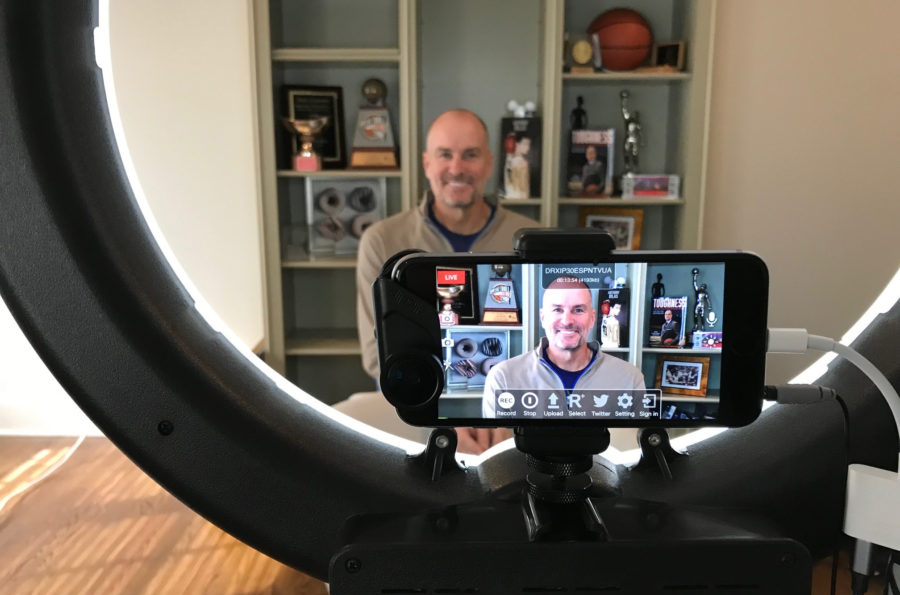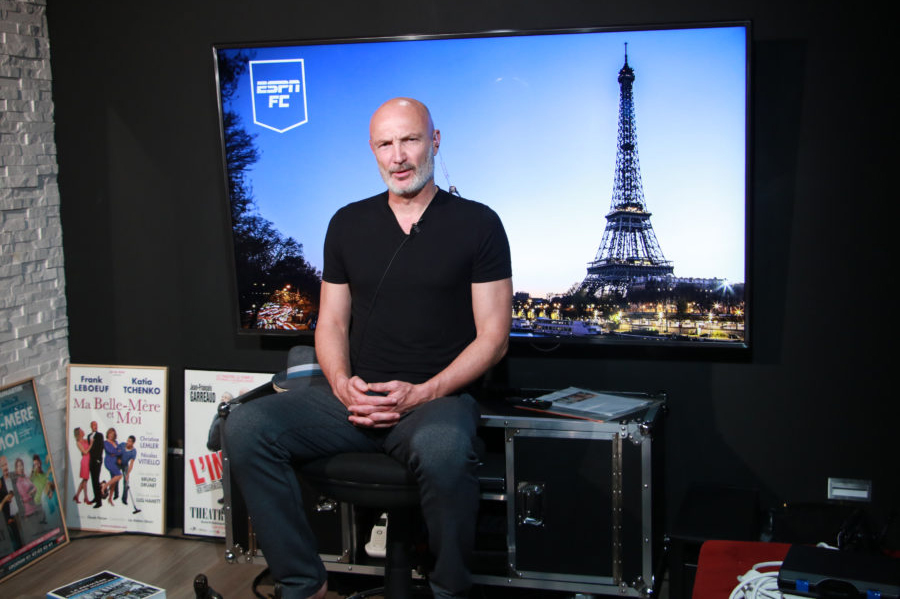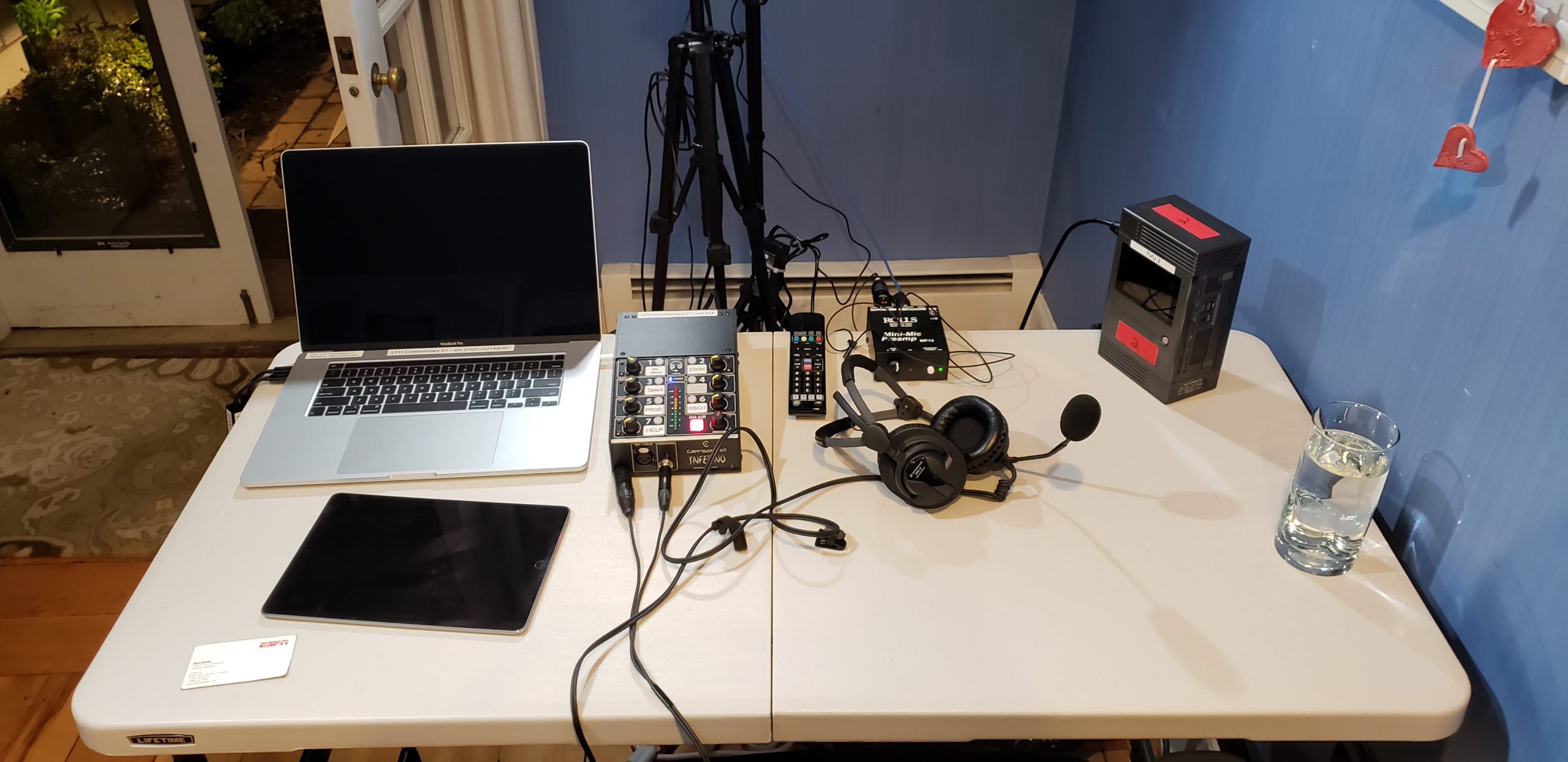From The Jump to Korean Baseball, ESPN’s ‘Live From Home’ Efforts Keep the Content Factory Churning
At-home studios, remote commentary kits, and ViBox REMI workflows have played key roles
Story Highlights
When the coronavirus pandemic brought the sports world to an abrupt halt two months ago, ESPN quickly formed a “Live From Home” committee to evaluate options that would allow on-air talent and crew to produce live studio shows from the safety of their own homes. In the months since, efforts by the committee — led by the Remote Operations department and comprising 30+ staffers from several ESPN departments — have resulted in the launch of more than 60 at-home studios for talent, five remote-commentary kits for live KBO League (Korean Baseball Association) telecasts, and a full REMI production workflow for several ESPN studio shows.
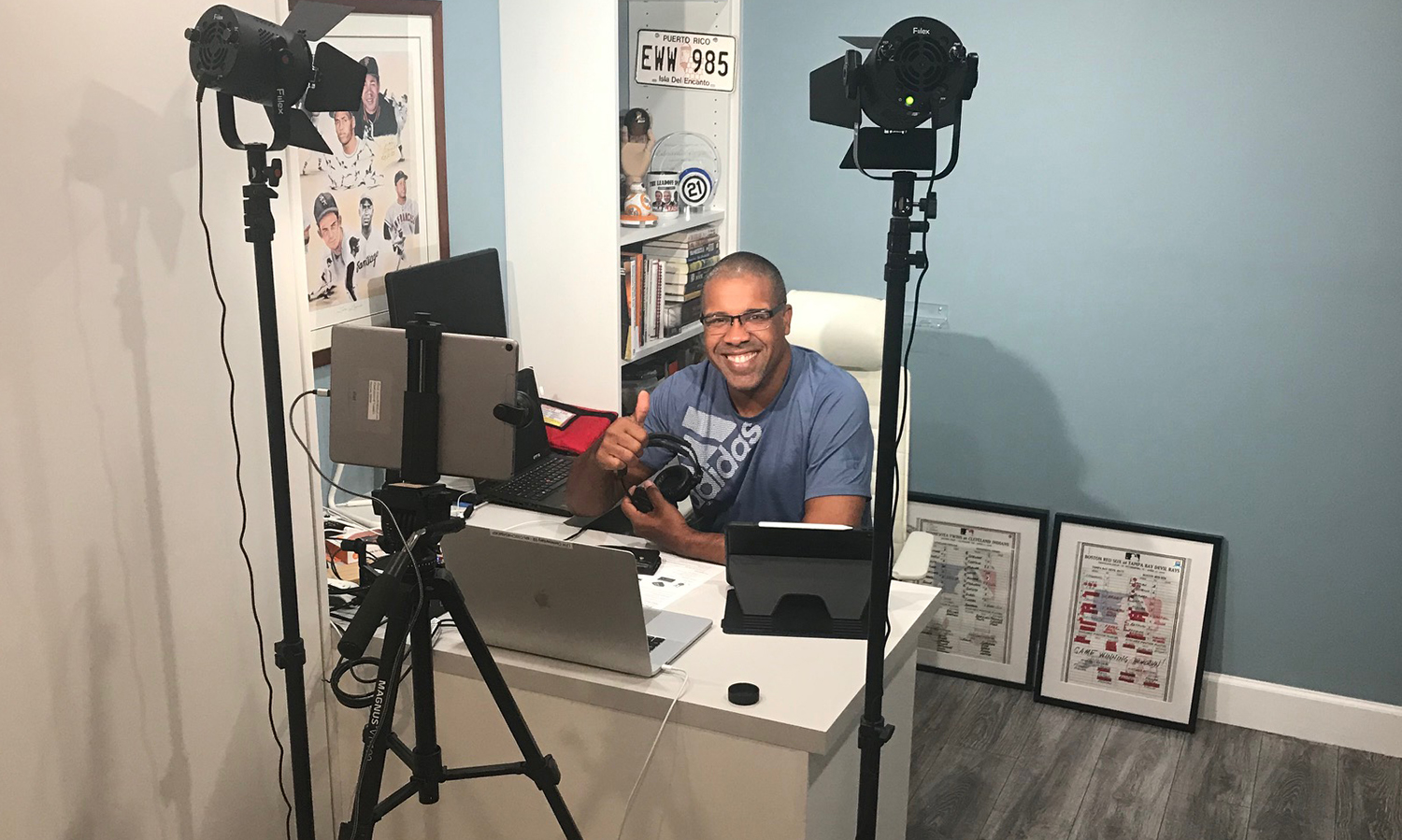
ESPN MLB analyst Eduardo Perez prepares for a KBO telecast using the a remote commentary system at his home (credit: Eduardo Perez/ESPN)
“Obviously, we all continue to plan for live sports to return,” says Chris Calcinari, SVP, remote operations, ESPN. “We’re on calls every day with our production partners and our league partners trying to work through scenarios and plans to come back once it’s safe to hold sporting events. But, in the meantime, we’ve been keeping busy coming up with homegrown, innovative solutions that allow our production teams to work from home. And we believe these innovations will prove to be extremely valuable once live sports return.”
‘Live From Home’ Studios: Keeping Commentators Active
ESPN’s Live From Home studios have become the backbone of the network’s studio operations since reduced staffing measures were put in place at ESPN’s Bristol, CT, campus. Although several shows are still being hosted out of the Bristol studios, nearly all analysts and reporters have been outfitted with robust studio facilities at their homes to enable them to contribute to ESPN programs.
“We had a pretty strong network of home studios even before the pandemic happened,” says Shea Byram, senior remote operations manager, ESPN, “but we’ve taken it to the next level now. Thankfully, we had a good system in place, which allowed us to get things done as quickly as possible and get the [studio kits] out to our talent.
When the sports world suddenly shut down on March 12, Byram and her team anticipated an increased need for at-home studios and ordered gear for an additional 30 studio kits.
A three-person team composed of Byram, Senior Remote Operations Coordinator Ryan Bastek, and Remote Ops Coordinator Leah Morgenstern constructed the kits and deployed them to talent throughout the country. In addition, Byram relied on the entire ESPN remote-operations team to perform the installations at commentators’ homes, walking them through the process via Facetime.
“That has been a lifesaver,” says Byram. “Normally, we are out on the road every week installing home studios at different locations. But, as soon as we got our travel ban, we had to enlist the help of everyone else in remote operations. At this point, we have a nice network of installers that are able to help us. We’re still [installing at-home studios] in the Tri-State area ourselves, but we are getting as much help as we can around the country from the rest of the team.”
The sophistication of the kits varies from a simple system comprising an iPads, lighting lights, and a transmission app to higher-end systems that are equipped with an IP-based PTZ camera and a more advanced transmission device for hosts who are on-air for several hours at a time. The 60+ systems installed over the past two months are in addition to ESPN’s pre-existing installations, and the team will continue to deploy more in the coming weeks.
Leveraging Seaport Studios: REMI Workflows
After initially exploring a variety of cloud-based solutions to produce studio shows remotely, ESPN quickly pivoted and opted to leverage the Simply Live ViBox multi-camera production system and other resources at its South Street Seaport Studios in Manhattan to create a fully REMI (remote-integration) production workflow.
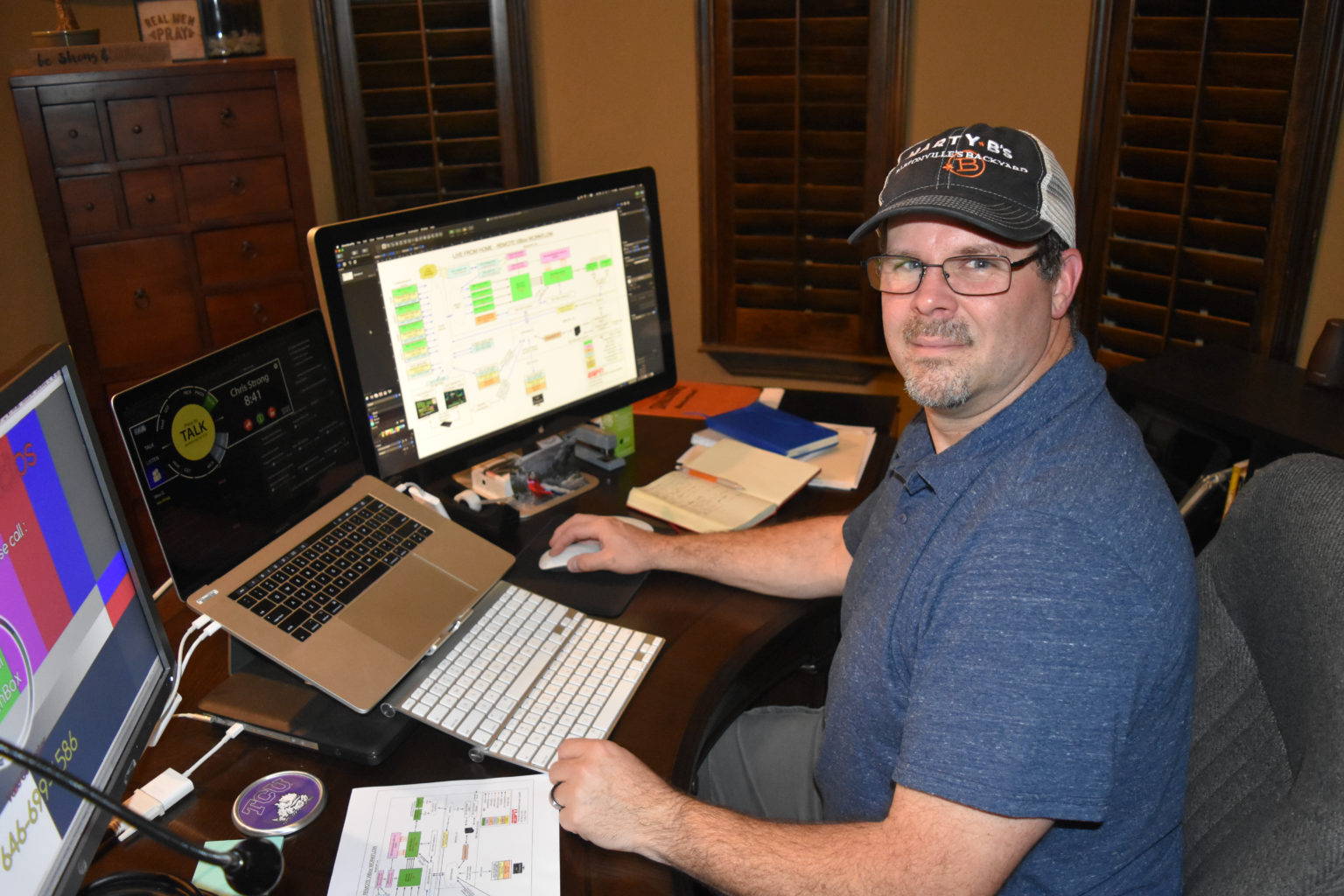
ESPN’s Chris Strong supports the REMI studio-show productions from his home office in Texas (credit: Chris Strong/ESPN)
“We were tasked with coming up with a solution to help the company put shows back on-air without straining folks in Bristol that are already producing shows safely using [social distancing] and using resources that we already had available,” says Chris Strong, senior remote operations specialist, ESPN. “We decided to leverage equipment and resources that were already at our Seaport [location], where we have a ViBox and an open studio available.”
Prior to the pandemic, ESPN had deployed ViBox to streamline several of its productions, including most notably at the U.S. Open as well as for its coverage of Little League baseball/softball, high school basketball. Strong says the thought of controlling the ViBox remotely had been considered for years and the company had already been testing a REMI ViBox workflow with SimplyLive for the past eight months.

Just one EIC – such as Wes Glogg seen here – is on-site at a time to manage ESPN’s Seaport Studios in NYC for the REMI productions (credit: Wes Glogg/ESPN)
“When we first started this review to create Live From Home workflows,” says Calcinari, “the main goal was to give our production teams the tools that they’re used to having. We evaluated a lot of cloud-based solutions and found a lot of limitations in terms of large volumes of video and graphics, as well as limitations in quality due to compression and processing. That’s why we turned to more of a hardware-based solution. With this solution, we can pull from all of the ESPN servers, and our production teams have everything they could possibly want at their fingertips without limitations — just like they would have in a normal production-control room.”
The crucial factor in enabling ESPN’s current REMI workflow was the recent release of SimplyLive’s UI Gateway, which significantly reduces the bandwidth requirements for remote operation, allowing at-home production using standard internet connections. Strong says that, with the UI Gateway, a ViBox operator requires an internet connection of only 5-50 Mbps, rather than the 100-150 Mbps previously required.
“It’s a real hardware solution that allows us to extend multiple remote-user interfaces without having a large bandwidth need,” says Strong.
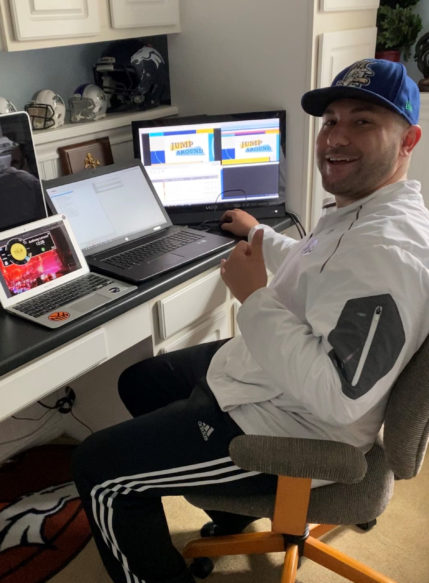
ESPN on-air specialist Anthony Lorusso operates a Vizrt graphics system remotely from his home (credit: Anthony Lorusso/ESPN)
ESPN’s studio shows are using Unity Intercom for all real-time comms between crew and talent and audio/video signals from commentator’s home are sent over the internet using TVU to the Seaport Studios for integration into the ViBox. The ViBox at Seaport Studios is controlled from the operators at their respective homes — Los Angeles in the case of The Jump and Washington for Around the Horn. ESPN graphics operators are also able to remotely access Vizrt graphics systems at Seaport to create and play out graphics from their homes. Editors and producers can access ESPN’s content library via high-speed file transfer to produce packages and bumps for the studio shows. The lone staffer onsite at Seaport Studios is an EIC to manage the equipment.
“We are truly able to let almost everybody work from home — graphics operators, editors, TDs, and directors — and support all of them with just one EIC at Seaport who actually touches any of the hardware,” says Strong. “Using Unity and the at-home studio kits, we bring in talent at a high quality in near real time. Now an entire production crew — which can be 15-20 people per show — can sit at home doing a linear taped show. I think you can see in the quality and the timing that it works really well and looks really good. And we’re still working to improve.”
Remote-Commentary Kits: ESPN Brings Back Live Baseball
Last week, ESPN began live English-language broadcasts of the KBO League, one of the first professional sports leagues to return to play since the pandemic hit. The deal came together quickly, which meant that ESPN’s operations team had to come up with a remote-commentary solution for its announcers in less than a week.
“The main goal when we started to develop this was to make talent feel as comfortable with equipment as if they were right there at the ballpark,” says Henry Rousseau, associate director, remote operations. “We based this system on systems that we have used for international events like World Cup and EUROs, where you have a commentator system in the stadium and each talent is responsible for creating their own individual mixes. The only difference is, now they’re at their homes.”
Rousseau worked with Strong and Remote Operations Manager Ryan Zainc to develop the remote-commentary kits and obtain the necessary equipment to complete them — not an easy task with a slowed global supply chain.
The Live From Home remote-commentary kit is a Unity-based system featuring a Dante-based Glensound Inferno commentary box connected to a MacBook Pro via a Dante Virtual Sound (DVS) card. Using the Unity Connect app, the system has seven bidirectional channels plus comms for the two on-air talent to have real-time comms with each other, with the producer/director in the control room in Bristol and members of the ESPN Research team at their homes. ESPN is also using Zoom teleconferencing on the MacBook to connect the two talent so that they can see each other and the production team during the live broadcast.
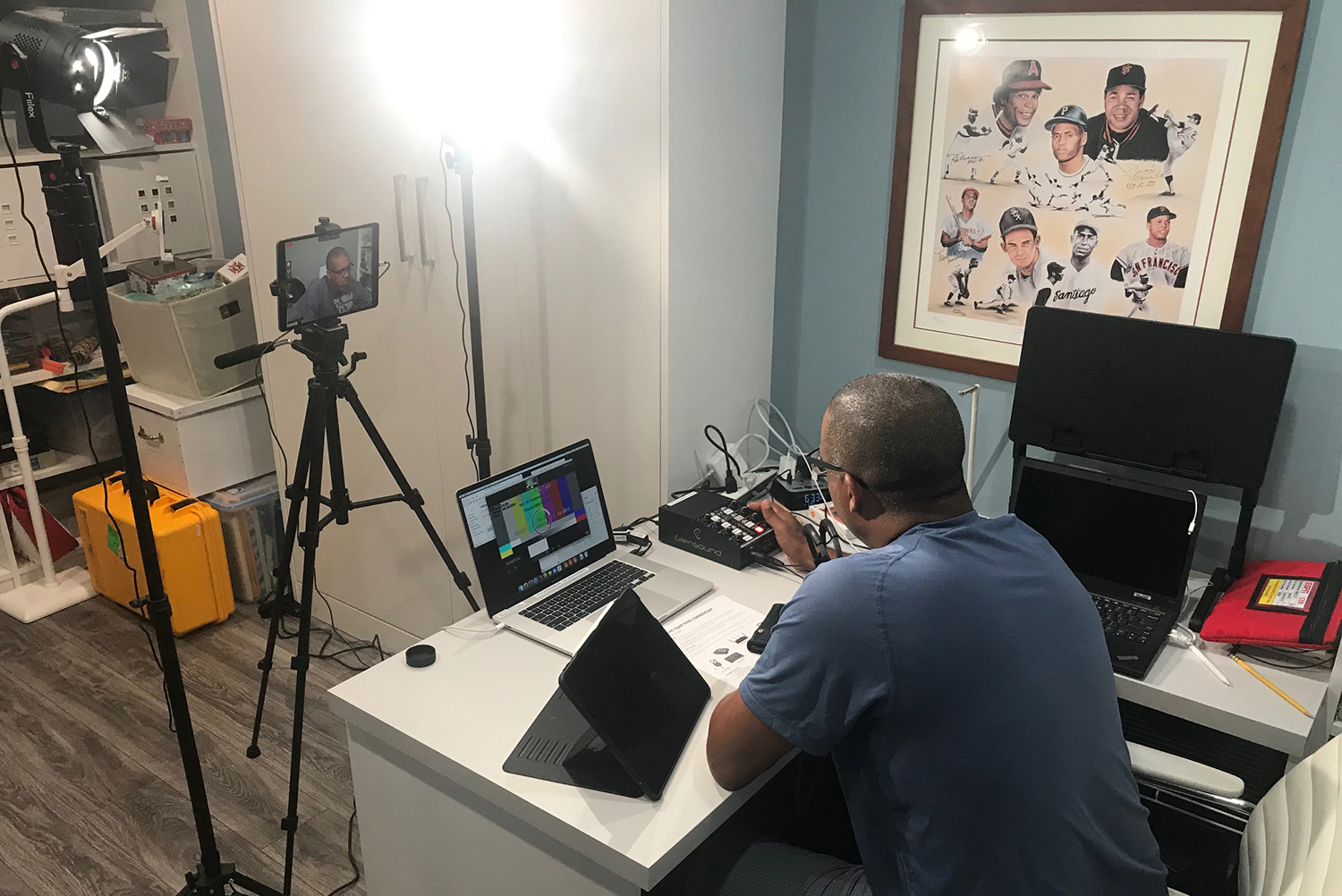
ESPN analyst Eduardo Perez is providing commentary for KBO baseball from his home. (credit: Eduardo Perez/ESPN)
“We’ve timed our audio to match [the live feed] so that the talent is able to communicate almost in real time,” says Rousseau. “On a lot of shows, there is a delay, and they end up stepping on each other. But we’re able to circumvent those issues with the Unity Connect app by having almost instantaneous communication between the two talent and the team back in Bristol.”
Kits have been deployed to ESPN commentators Karl Ravech, Jon Sciambi, Eduardo Perez, Jessica Mendoza, and Kyle Peterson.
“We were a little apprehensive at first,” says Rousseau, “when we sent out the equipment not knowing how talent was going to react to the new technology and new workflow. But they have really embraced it and even asked us to make some modifications so they can control more of their mix. Knock on wood,” he adds, “it has been pretty flawless, and I’m extremely happy with both the quality and the simplicity of the system. This can all fit into one simple little carrying case. and I see it as something that we can definitely use for future at-home broadcasts.”
Looking Ahead: How the New Tools Could Factor Into Future Productions
With live sports slowly returning in the coming weeks and months (albeit likely without fans in the stands), Calcinari says, ESPN is evaluating how all these newly developed Live From Home tools could be used in the future.
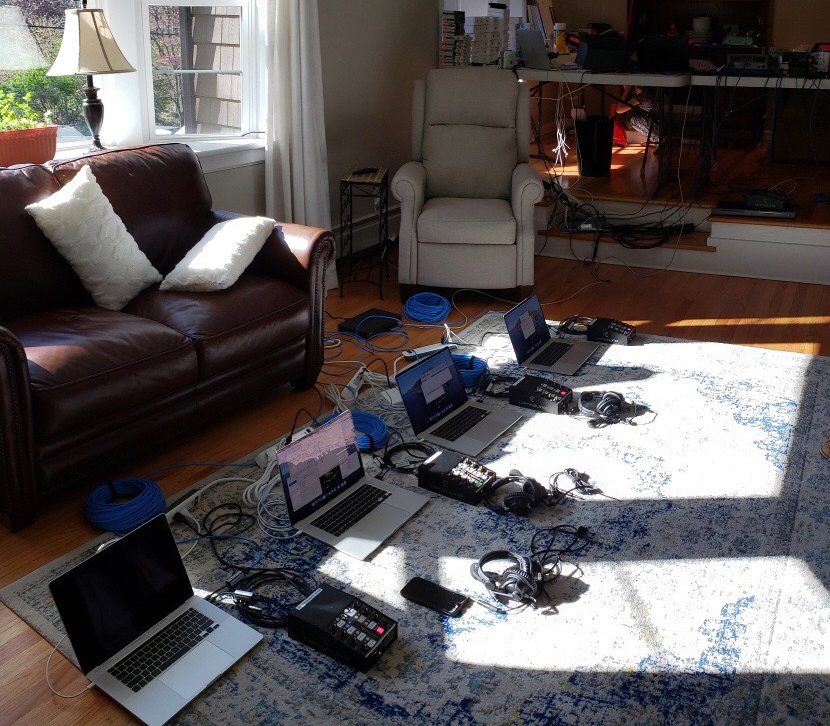
The five remote commentary systems on hand at Remote Operations Manager Ryan Zainc home prior to being sent out to talent. (Credit: Ryan Zainc/ESPN)
In regard to the commentary system, he says, “As sports come back and we evaluate whether people can travel safely, we’ll determine whether we expand this remote-commentary model further.”
He also says ESPN is working with one of its mobile-facilities providers to evaluate whether a small REMI mobile unit outfitted with a ViBox could be controlled remotely from an operator’s home for live game coverage.
“All of that is being evaluated right now in terms of how we can apply this to remote events; we’re not ruling anything out,” says Calcinari. “We’re still working through the specific workflows, but that process is absolutely happening. We are definitely trying to leverage the learning and innovation that has come out of our efforts during the pandemic to make us better when we come out of this. There’s no question about that.”
